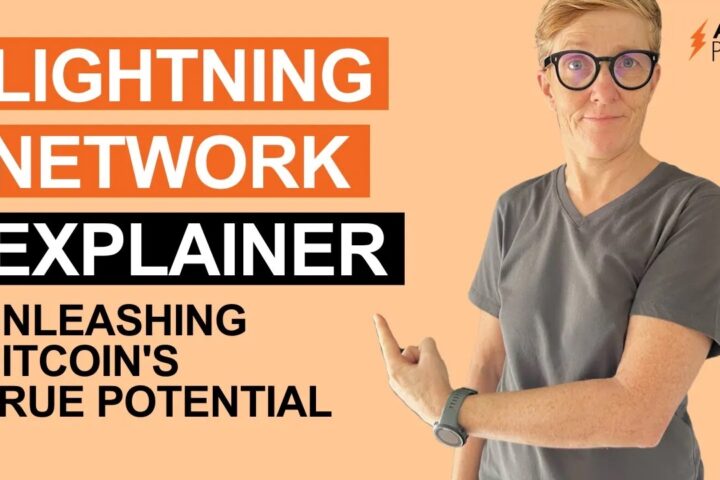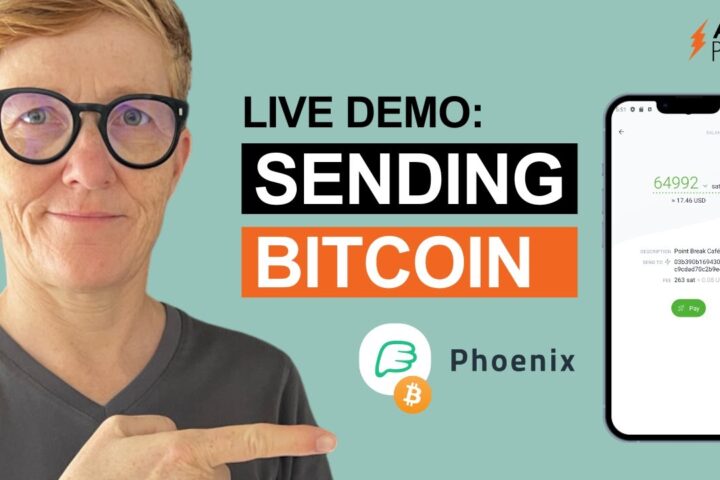Excerpt
I clarify the different payment formats when using the Phoenix wallet, a self-custody Lightning wallet that also lets you use Bitcoin on-chain by swapping out your funds. Learn when to use the Lightning Network and when to choose bitcoin on-chain. Watch now to understand the difference, to see how you can open channels easily, and save money on fees!
Transcript
Phoenix Wallet Overview
The Phoenix wallet is a pure self-custody Lightning wallet which also offers the possibility to send and receive on-chain bitcoin through swaps. But it’s first and foremost a native Lightning wallet. It gives you the opportunity to easily open a channel that connects you with the Lightning Network and it doesn’t hold on-chain bitcoin. So you’re using Phoenix only for Lightning, not for on-chain bitcoin.
Alternatives for On-Chain Bitcoin
For on-chain Bitcoin you can use wallets that are dedicated towards that like Blockstream Green, Aqua Wallet, or, which I like because it offers coin control, the BlueWallet. When you start to use the Phoenix wallet it first needs to open a channel for you. For this you need to send bitcoin to Phoenix; you can either send Lightning bitcoin or on-chain bitcoin and this is where the different formats come into place.
Opening a Channel on Phoenix
The cheaper and fastest option to open a channel on Phoenix is to send Lightning funds to the Lightning invoice that Phoenix shows you. You can also use the Bitcoin address to send on-chain bitcoin to Phoenix. The money will then be swapped from on-chain into your new Lightning channel but, as that is coming from on-chain (from the blockchain), you’ll need to pay the first on-chain transaction fee and then the transaction needs to reach 3 confirmations before Phoenix can open a channel for you.
To open that channel Phoenix has to conduct another on-chain transaction and is deducting the transaction fees for that one from the funds you sent. That means that in times of congestion on the blockchain, the transaction might be expensive and the opening of the channel might take some time if you haven’t set a fee that pushes your transaction into one of the next blocks.
Additional Resources and Testing
You can find more details about Phoenix and other self-custody Lightning wallets in this wallet test which I conducted in January this year in a rural area of Zimbabwe. As I always say: If Bitcoin works there or a wallet works there, it will work everywhere.
Fee Management and Best Practices
It’s also important and interesting to save money. You can set the maximum fee you want to pay for an on-chain transaction in the Phoenix settings in Channel Management but, of course, if you set it too low the channel cannot be opened because then the transaction will never be confirmed.
Only send Lightning funds from within Phoenix to on-chain if it is really necessary, maybe because you want to close the wallet. Closing reduces the size of your channel, which means the liquidity and the possibility to receive new bitcoin is shrinking. You will need to pay another fee when you want to increase liquidity again, so it is better to send funds from your Phoenix wallet that you want to have on-chain using Lightning to boltz.exchange and swap it into on-chain there.
Conclusion
So that was the first part of this question. To conclude, yes, the best is to send Lightning funds to Phoenix when you open it for the first time to open a channel because it is much cheaper and faster than with on-chain bitcoin. The on-chain bitcoin address is only for you if you want to close the bitcoin or if you want to swap in via on-chain, which I do not recommend.



